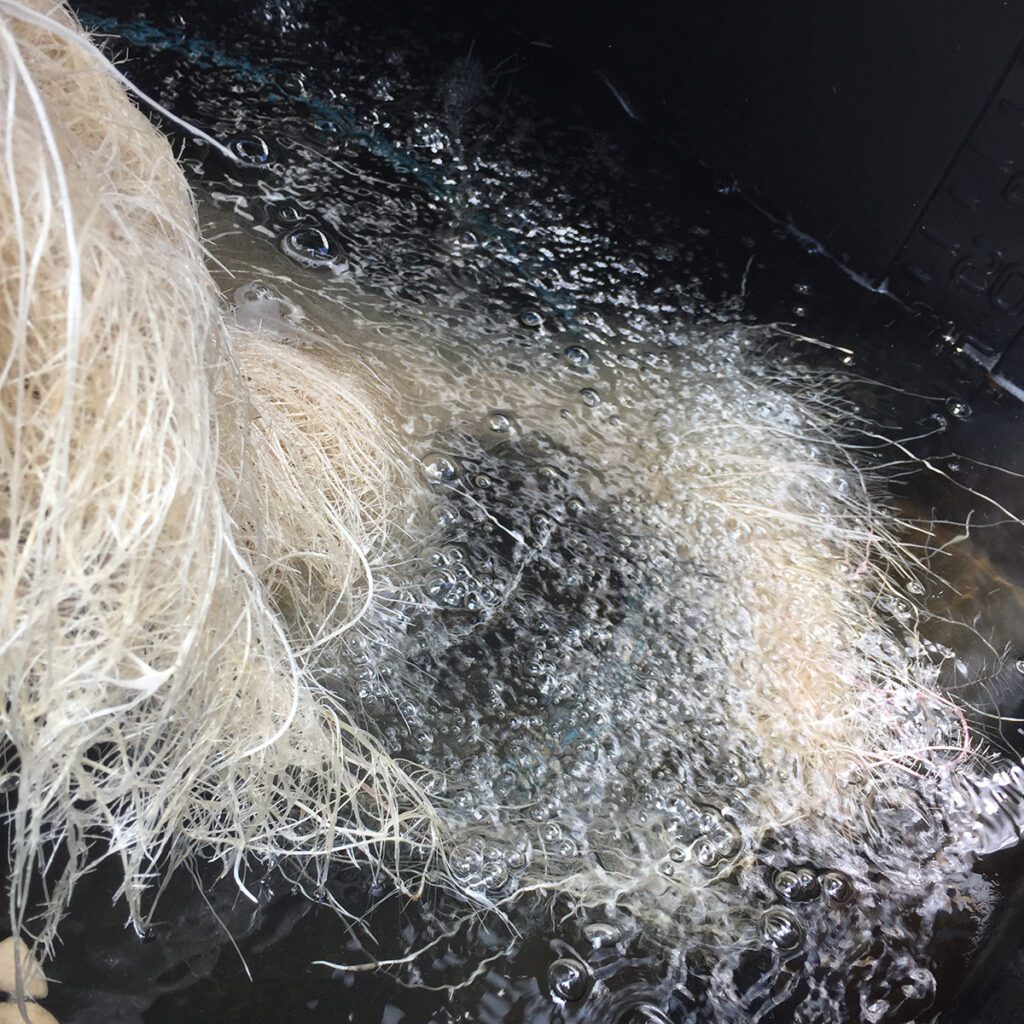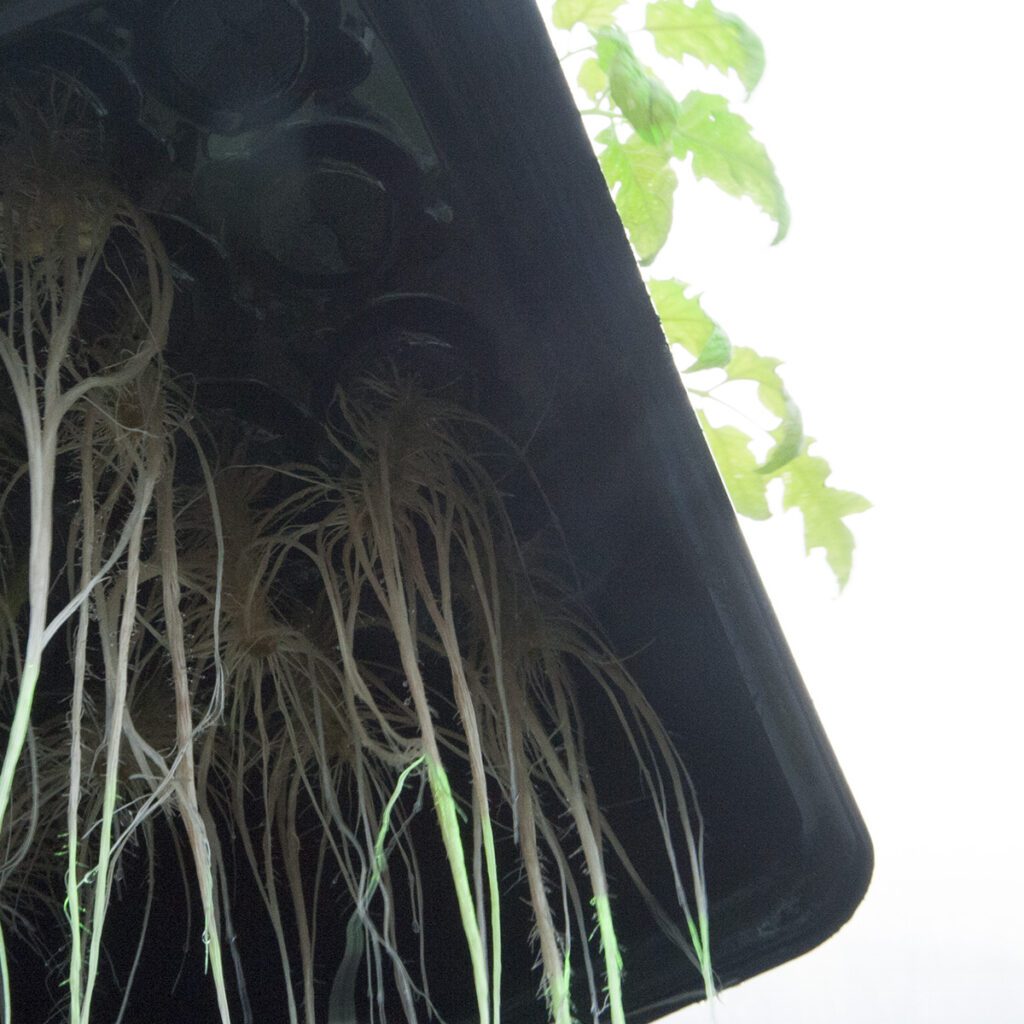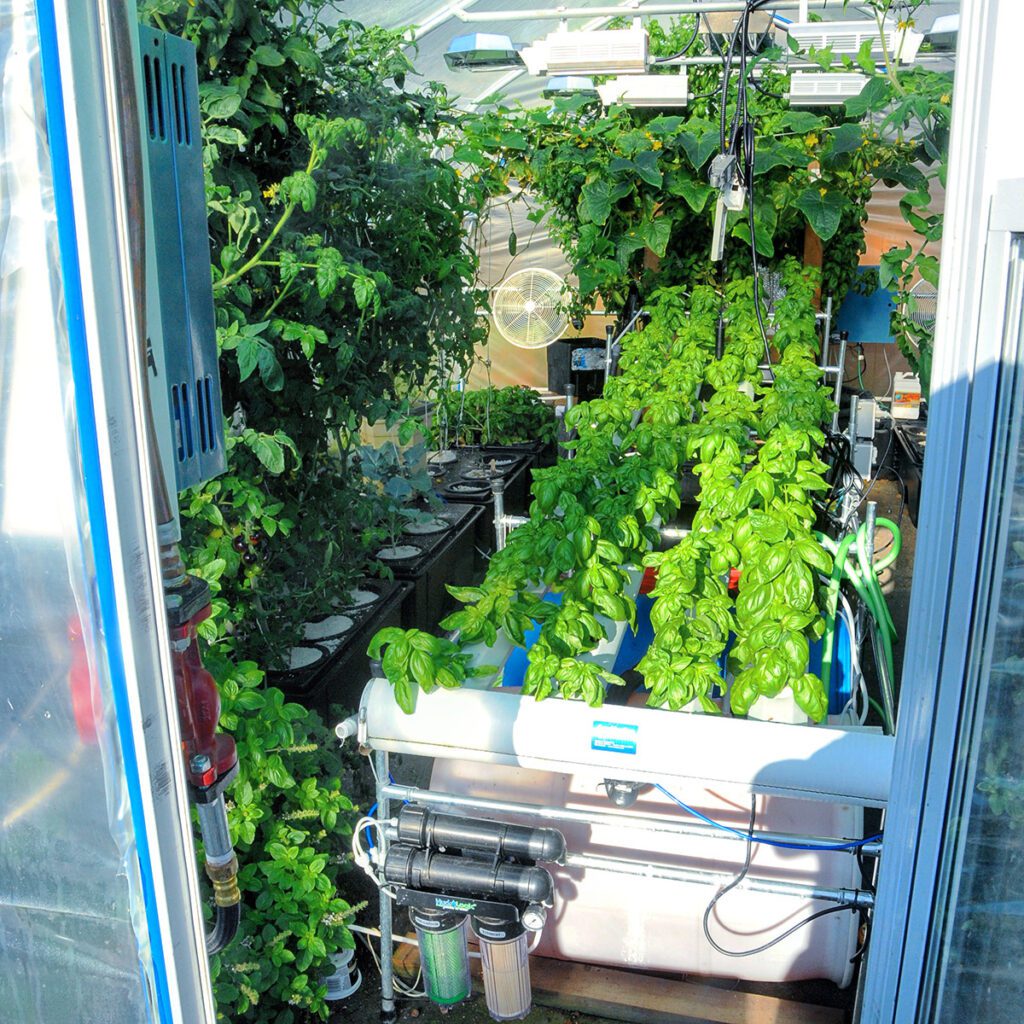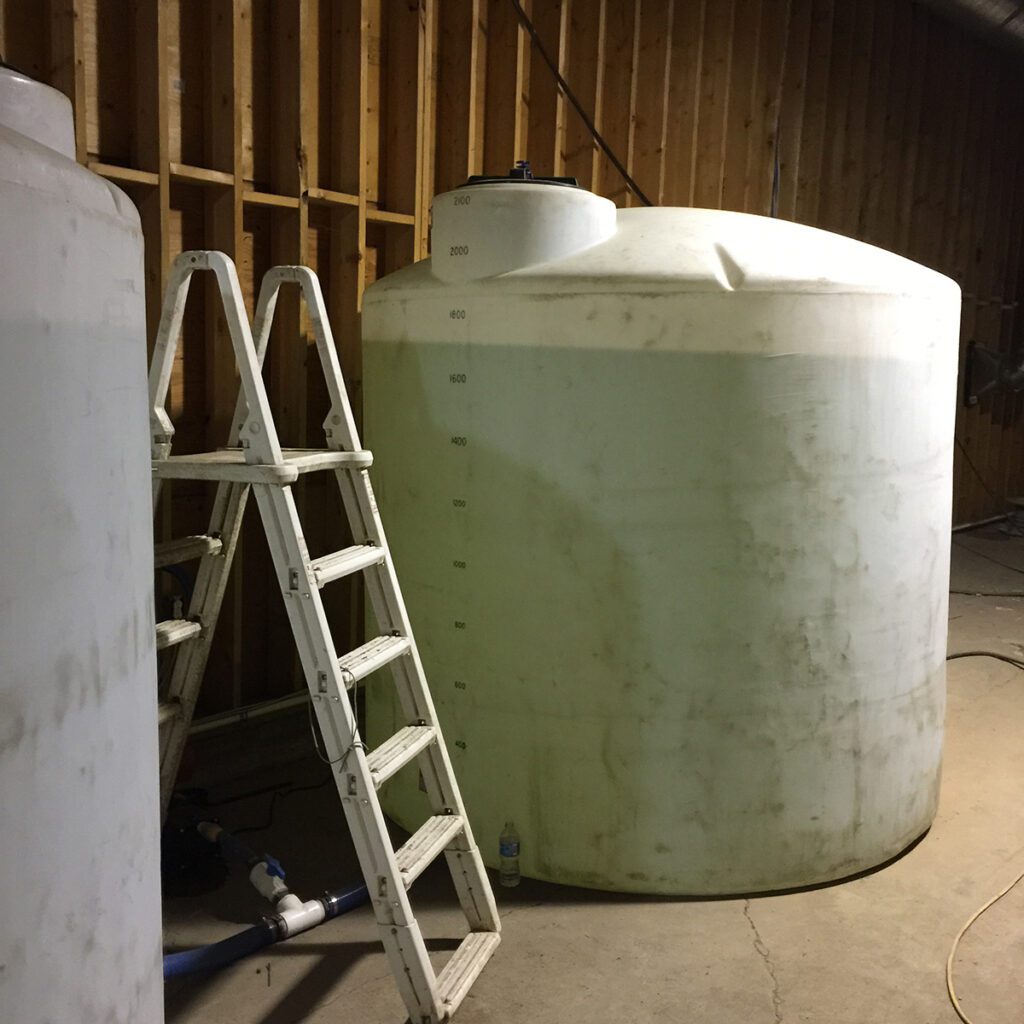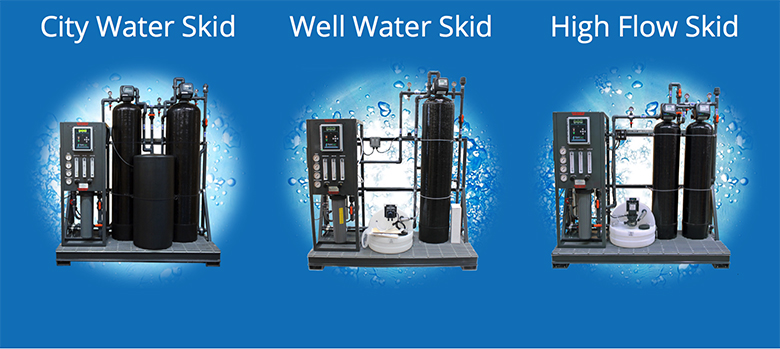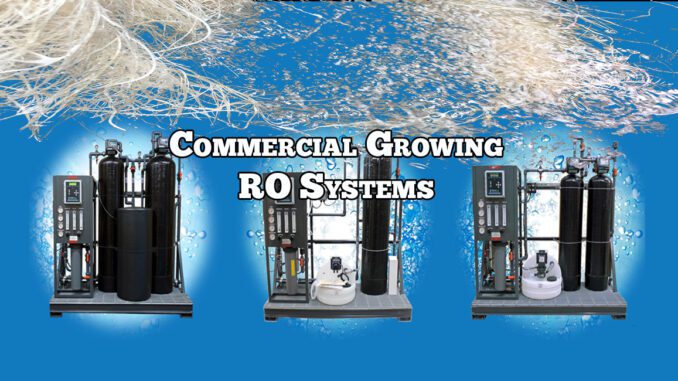
Commercial Growing RO Systems
High Volume, Low Waste Adaptable Reverse Osmosis
Commercial growing RO systems have a tougher set of criteria and demands placed on them versus smaller scale home garden sized Reverse Osmosis (RO) water filtration systems. However, for both home gardeners and commercial growers alike, there is a need for pure water that is free of common contaminants from wells or municipal supplies, including the removal of the following and more:
-Lead
-Mercury
-Chlorine
-VOCs
-Unwanted Minerals
[quote]When it comes to commercial growing RO systems, bigger is often better—higher daily capacities often mean less discharge water for every gallon of product water captured through the RO filtration process.[/quote]
In commercial growing RO systems, the need for water that “behaves better” for growing plants is of great significance. Unwanted minerals or contaminants in unfiltered water supplies can bind with nutrients from fertilizers, making them less effective and hurting growth rates and plant health. Further, these unwanted substances can affect crop qualities like aroma and flavour, diminishing the value of the plants grown and harvested.
Above: Healthy crops begin from the roots up, UC Pro System Roots in prime health in RO Water
Commercial growing RO systems and home garden water filtration systems also need to be able to remove Chlorine and Chloramines, which are common in municipal tap water sources. Chlorine and Chloramines can harm beneficial life in soils, organic compost teas or beneficial inocculants, for example Mychorhizae or Trichoderma. These beneficial microbes are very important for the health of plants growing in soil, coco, and peat or other soilless growing substrates.
PRO Tip: EZ Clone recommends using a ratio of 3 parts RO water to 1 part Tap Water for a more stable pH
Where the greatest differences start to come into play between commercial growing RO systems and home gardening RO systems is the amount of product water (purified water) they are going to need to produce on a daily basis. Naturally, all RO systems require some level of discharge water (water that can be purified later, but is a by-product of the RO water purification process). Smaller RO systems tend to generate more discharge water relative to product water captured, ie the ratio of discharge water to product water is higher.
NOTE: well designed hobby sized systems like this Stealth Series have improved discharge:product water ratios versus other units with similar GPD (gallons per day) ratings.
Because the GPD demands are going to be considerably higher for commercial growing RO systems, ie water for hundreds or thousands of plants versus a small garden bed or a dozen potted plants, the ratio of discharge water to product water is of great significance. While most of us can afford to drain several gallons of water away without a huge amount of worry, thousands of gallons per day becomes another matter from both a financial and ecological perspective.
When it comes to commercial growing RO systems, bigger is often better—higher daily capacities often mean less discharge water for every gallon of product water captured through the RO filtration process.
The differences can be significant.
Here’s a quick example:
150 GPD RO Filter System, 2:1 waste:product water (or optional 1:1 with restrictor)
1000 GPD RO Filter System, 2:1 waste:product water (or optional 1:1 with restrictor)
2000-19,000 GPD Commercial Growing RO Filter System, 1:4 waste:product water (yes, you read that correctly!)
Why Don’t All RO Systems Operate That Efficiently?
Commercial growing RO systems cost more, as one would expect for an appliance that has up to twenty times there output of more commonly sized RO filtration systems—as a result there are more “smarts” built into the system along with other features.
A key achievement in Commercial Growing RO System is the incorporation of a Reverse Ratio Technology. The Reverse Ratio Technology is described as follows:
“Reverse ratio is a technology that can save a huge percentage of the concentrate (waste) water that would normally go down the drain.
Reverse ratio technology is a re-circulation method used to recycle waste water back through the membranes to improve efficiency allowing for waste to product (permeate) water ratios unparalleled by other reverse osmosis systems.
The ratios are adjustable and if certain feed water conditions are met due to the nature of feed water, or by implementing the proper pre-treatment, you can literally reverse the ratio that other RO systems offer. Instead of a 4:1 waste to product water ratio you can run an unbelievable 1:4 waste to product water ratio!”
Above: purpose built commercial water purification technologies
Adaptable Filtration Technology
Because not all commercial growing RO systems will need to supply 19,000 US Gallons per Day, the HyperLogic RO system is adaptable ie modular.
Here’s more about how the adaptive design works:
“The HyperLogic is part of a new generation of commercial Reverse Osmosis machines that deliver uncompromised, professional quality and cutting edge innovation.
It features an expandable RO configuration that can be easily upgraded to achieve higher product water flow rates, while the frame, pump, controls and components all remain the same.
Just install a membrane add-on kit and virtually double your flow rates.
The system features a microprocessor computer controller that provides vital, user-friendly function and diagnostics. Custom adjust your product to drain water ratios and achieve industry-leading water savings.
Never before has such a powerful and efficient water purification machine been available at such a competitive price. An entire line of commercial pre and post treatment products complement the Hyper-Logic RO allowing you to treat even the worst quality water.”

